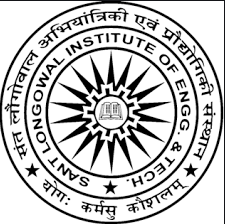
SLIET SET - Syllabus
Sant Longowal Institute of Engineering and Technology Entrance Exam
SLIET SET 2023 Syllabus: Course-by Course, Important Topics, Exam Pattern
Updated On - March 31 2023 by Divyansh K
Sant Longowal Institute of Engineering and Technology will publish the SLIET SET 2023 syllabus at slietexam.co.in. Through the SLIET SET syllabus 2023, candidates will be able to verify the subjects and themes that must be studied for the entrance examination. Candidates are encouraged to review the SLIET SET syllabus before beginning their exam preparation. Candidates will be able to plan out their studies more effectively if they are aware of the . SLIET SET 2023 will be a pen-and-paper examination. To learn more about the SLIET SET Syllabus 2023, read the entire article.
SLIET SET 2023 Syllabus
The following is the course-by-course syllabus:
- The syllabus for the ICD (Integrated Certificate Diploma) Program includes English, General Knowledge, Mental Aptitude, Mathematics, Physics, and Chemistry.
- JEE (Main) syllabus for B.E (4-year degree programme) B.E (Lateral entrance) syllabus for General Knowledge, Mental Aptitude, English, Mathematics, Physics, Chemistry, and Engineering Fundamentals
- Admission to the M. Tech programme will be through GATE 2023, and the syllabus will follow the GATE criteria as well.
- Admission to the MBA programme will be based on a valid CAT/CMAT result.
- Admission to the M. Sc. programme will be through CCMN 2023, and the curriculum will follow CCMN norms.
- The syllabus for the PhD programme is determined by the stream in which the candidate has opted to pursue the degree.
SLIET SET 2023 Syllabus - General Knowledge, Mental Aptitude, and English
| Topics |
|---|
| General Science |
| Current events of National and International Importance |
| History of India |
| Indian Politics and Economy |
| Indian National Movement |
| General Mental ability |
| Idioms/Phrases |
| Usage of Tenses |
| Change the form of Narration |
| Fill in the blanks with suitable words |
SLIET SET 2023 Syllabus - Mathematics
| Topics | |
|---|---|
|
|
|
|
|
|
|
|
|
|
|
|
SLIET SET 2023 Chemistry Syllabus
- Atoms, Molecules and Chemical Arithmetic: Symbols, formulae, oxidation, reduction, oxidation number, balancing of simple chemical equations, mole concept, empirical formulae and molecular formulae.
- Chemical families – Periodic Properties: Mendeleev’s and Modern periodic tables, classification of elements into s, p, d and f blocks, periodic properties (ionization potential, electron affinity, atomic and ionic radii, oxidation states).
- Atomic Structure, Bonding and Molecular Structure: Bohr’s theory, brief description of hydrogen spectrum, the wave nature of matter, de-Broglie’s theory, Uncertainty principle, Quantum numbers, Pauli’s exclusion principle, Hund’s rule of maximum multiplicity, shapes of orbitals, electronic configuration of atoms upto atomic no.
- Types of bonding (ionic, covalent and coordinate covalent), Lewis structure, VSEPR theory, Molecular orbital theory and molecular shapes, hybridization (sp, sp 2 and sp 3 ) and molecular structure, hydrogen bond, metallic bond, Vander Waals forces.
- PHYSICS Marks: 15(15Questions) Description of Motion: Motion in a straight line, uniform motion, speed and velocity, equation of motion in a straight line, position time graph, instantaneous velocity and acceleration, motion in two dimensions, projectile motion, uniform circular motion, torque, angular momentum, conservation of angular momentum, centripetal and centrifugal forces, centre for mass, motion of centre of mass and momentum conservation.
- Moment of Inertia: Moment of Inertia (M.I.) of rigid body, radius of gyration, theorem of parallel and perpendicular axes, M.I. of a straight rod, circular ring, circular disc, relation between torque and M.I., kinetic energy, motion of point mass tied to the string to the wound on a cylinder, motion of cylinder rolling without slipping on an inclined plane.
- Kinetic Theory of Gasses: Boyle’s and Charles’s laws, gas equation, gas constant, pressure exerted by gas, kinetic energy of molecules, kinetic interpretation of temperature, derivation of gas laws from kinetic theory of gases.
- Electromagnetic Waves, Atomic and Nuclear Physics: Production and properties of e.m. waves, e.m. spectrum, nature and velocity of e.m. waves, propagation of radio waves in earth’s atmosphere, photoelectric effect, laws of photoelectric effect, production of x-rays, soft and hard x-rays, uses of x-rays, Radio activity laws, half-life and average life for radioactive materials, nuclear fission and fusion.
- Objective Type Questions Fill the choice of the alternative you think to be correct answer in the OMR answer sheet.
SLIET SET 2023 Syllabus: Engineering Group
| Groups | ||
|---|---|---|
| A - (Electrical, Electronics and Computer Group) | B - (Mechanical Group) | C (Chemical and Food Group) |
|
|
|
SLIET SET 2023 Exam Pattern
Candidates can check the detailed SLIET SET exam pattern 2023 from the table given below:
| Particulars | Details |
|---|---|
| Exam Mode | Pen-and-Paper-based Examination |
| Duration | 2 Hours and 30 Minutes |
| Medium | English |
| Nature of Questions | Multiple Choice Questions |
| Sections | English General Knowledge Mental Aptitude Mathematics Physics Chemistry |
| Total Number of Questions | 150 Questions |
| Total Marks | 150 Marks |
| Marking Scheme | One mark will be allotted for every correct answer. 25% negative marking will be done for wrong answers. |
Form Start Date:
15 Apr 2023
Form End Date:
30 Jun 2023
The last date to submit the form was on 30 Jun 2023
Browse Other ExamsExamination Date (Offline):
18 Jun 2023, 16 Jul 2023
Application Fees:
₹ 1,750

Comments